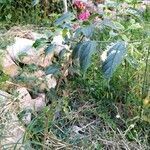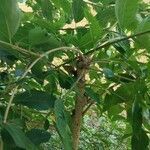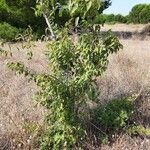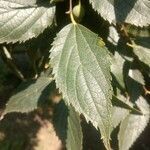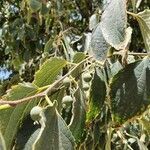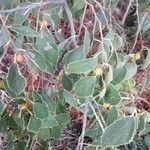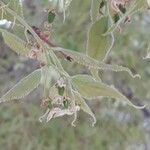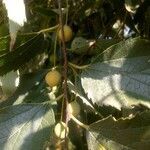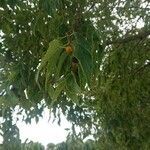A tree which grows 25 m tall. It loses its leaves during the year. The crown is rounded. The trunk is thick. The young branches are downy. The bark is smooth and grey. The leaves are oval or sword shaped. They are 15 cm long by 5 cm wide. They have a sharp point. There are teeth along the edge. The leaf stalk is short. The male and female flowers are small and greenish. They can occur singly or in small clusters in the axils of leaves. The fruit are small, round and berry-like. They are dark purple when ripe. They are 1 cm across. They are sweet and edible.
Deciduous tree, 10-30 m high, bark grey and smooth, lenticels smooth minute. Leaves alternate, simple, narrowly ovate, apices acuminate, base rounded, slightly asymmetrical, margins usually serrate throughout, grey-pubescent beneath and drying bright yellow-green above; petioles 5-15 mm long, densely pubescent. Inflorescence appearing with leaves; buds pubescent. Fruit a glabrous, ellipsoid drupe, 10-12 mm in diam., purple-black when ripe.
